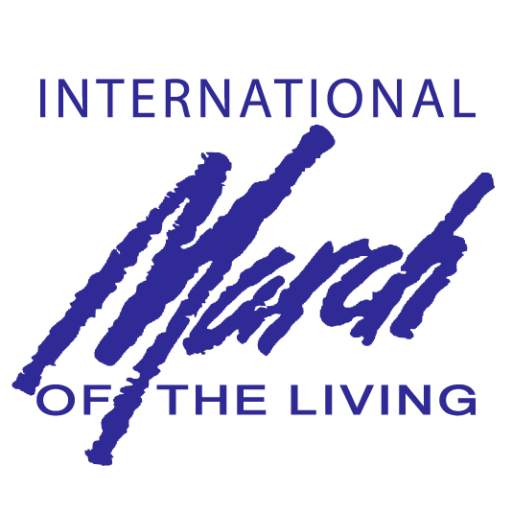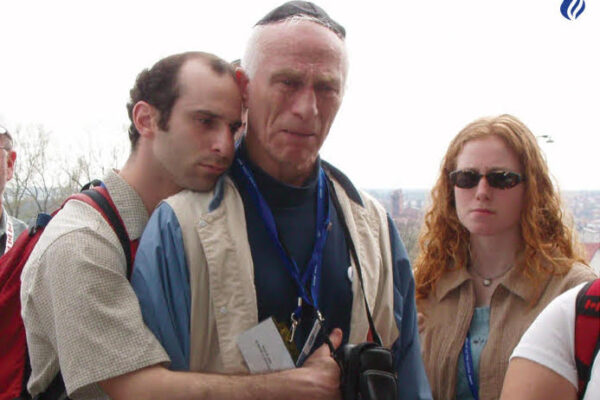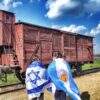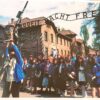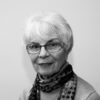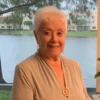Youngest witness, now 90, recalls terror of selection days, when SS men decided who was still fit to work and who should be killed
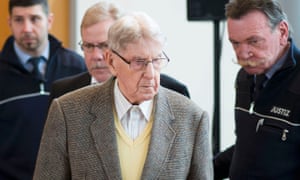
Three Holocaust survivors have testified about the horrors they experienced at Auschwitz, on the second day of the trial of a former SS sergeant on 170,000 counts of accessory to murder.
Reinhold Hanning, 94, showed no emotion as the witnesses told of crematoria chimneys belching flames, naked prisoners being taken to the gas chambers, and people being shot.
Justin Sonder, the youngest of the witnesses at 90, arrived at Auschwitz aged 17 and was selected to be a slave labourer for the IG Farben company rather than sent directly to the gas chambers.
He told the court that after three or four months he was considered one of the older prisoners and feared most selection days, when SS men would look at rows of inmates – who were forced to stand in a line naked for up to four hours – and decide who was still fit to work and who should be killed.
“I don’t have the words to describe how it was, when you know that you could be dead in one or two hours, it made you sick, made you crazy,” Sonder said, his voice trembling. “I survived 17 selections.”
Hanning is accused of serving as an SS Unterscharführer (junior squad leader) in Auschwitz from January 1943 to June 1944, a time when hundreds of thousands of Hungarian Jews were brought to the camp in cattle cars and gassed to death.
When first questioned by investigators he admitted that he had served in the Auschwitz I part of the camp, but denied serving at the Auschwitz II-Birkenau section, where most of the 1.1 million victims were killed.
Prosecutors argue that he is guilty of accessory to murder because he helped the death camp to function, even though there is no evidence of him committing a specific crime.
Hanning has spoken only one word so far in the trial, telling the presiding judge Anke Grudda on Friday, when she asked how he was after the first day of trial, that he was “good”. Trial sessions are limited owing to Hanning’s health, and a doctor is on hand throughout.
Hanning’s lawyer, Andreas Scharmer, said it was highly likely that his client would make a statement during the proceedings, but he would not say when or how detailed it might be.
Sonder said he looked forward to hearing what Hanning had to say. “Perhaps he will try to explain; it would be good if he did,” he said after the session. “I hope he finds the courage to say something.”
Another survivor, Erna de Vries, told the court that when the Nazis came for her Jewish mother in 1943 she did not have to go with her to Auschwitz, as her father was not Jewish. But she chose to stay with her.
She had been in Auschwitz for two months when the SS took her and about 85 other people of mixed heritage to the women’s concentration camp Ravensbrück. “That was one of the worst days of my life when I was sent to Ravensbrück and my mother stayed in Auschwitz,” she said. “I never saw her again.”
She said her mother had been happy to hear that she was going to Ravensbrück, knowing that any place was better than Auschwitz. “Auschwitz was a death camp, and she had the hope it would get better for me,” she said.
Leon Schwarzbaum, a 94-year-old Auschwitz survivor from Berlin who was used as slave labourer to help build a factory for Siemens outside the camp, said he could not see the area with the gas chambers and crematoria from where he was kept, but everyone knew exactly what was going on there.
“We saw the fire from the chimneys,” he told the court. “So much fire came out of the chimneys, no smoke, just fire. And that was burning people.”
The three are among about 40 survivors and their families who have joined the trial as co-plaintiffs, as allowed under German law. Not all will testify, but the trial is scheduled to hear from three more when testimony resumes next Thursday, and two next Friday.
